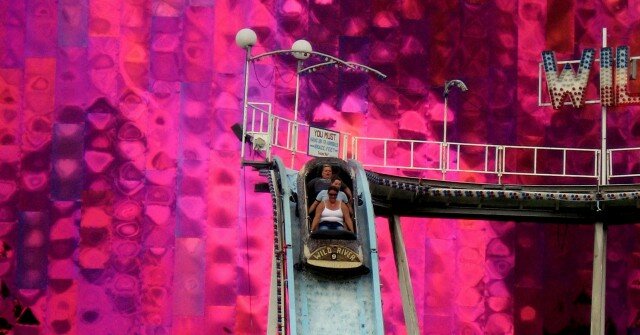
Mayor McGinn got an out-of-town boost this week, when the Federal Transit Administration announced the City of Seattle won a $900,000 grant to study a high capacity transit in downtown Seattle. (Also, Sound Transit netted $5.4 million to “replace buses in its Seattle-area fleet that are beyond their useful lives with hybrid-diesel buses.”)
Explains the FTA:
The study will examine the benefits, costs, and impacts of implementing an urban circulator in the corridor between the Lower Queen Anne, Uptown, and South Lake Union neighborhoods to the north, and the King Street Station and International District Multimodal Hub on the south end of downtown. […] The current Seattle Transit Master Plan estimates that the Connector project could generate approximately 10,000 new transit riders in Seattle Center City by 2030.
The high-capacity transit corridor would better connect neighborhoods with each other, and could also link the King Street and International District Stations, Colman Dock, and Westlake Center.
To the McGinn administration, “circulator” is synonymous with “a rapid streetcar,” which is an idea the Mayor has been trying to talk the Council into throwing money at. Notes Publicola: “The city council has long been cool to the idea of westside Seattle rail, noting that it’s far more expensive than other options such as bus rapid transit.”
Properly done, BRT is a fast way to reach high capacity, though you eventually top out in the number of passengers you can carry, compared to the ability of rail to simply add another coach. Longer term, rail’s carrying capacity might exceed BRT’s by as much as 100 percent, assuming those passengers eventually show up. But BRT has to be correctly implemented, or it amounts simply to more buses creeping down already crowded roads.
Consider the SLU streetcar a kind of pilot project: With the new Amazon campus open in South Lake Union, the streetcar “carried 2,681 people per weekday in September,” reports the Seattle Times. While early ridership was projected at 1,000 trips a day, it was thought that might triple by 2020. Now you see fewer stories about how far away 3,000 trips a day seems.
McGinn would like to see $1.5 million in the 2012 city budget for a major streetcar network study, and getting $900,000 helps prime the public opinion pump. Thus spake he: “Combined with rail planning money I have proposed in the 2012 budget and funding from other sources, this brings us closer to expanding our streetcar network and giving people better transportation choices.”
Congressman Jim McDermott stayed out of the modality wars: “This will put Seattle in a better position to compete for transit dollars, and the family-wage construction jobs that will come with them when Congress passes the American Jobs Act.”
